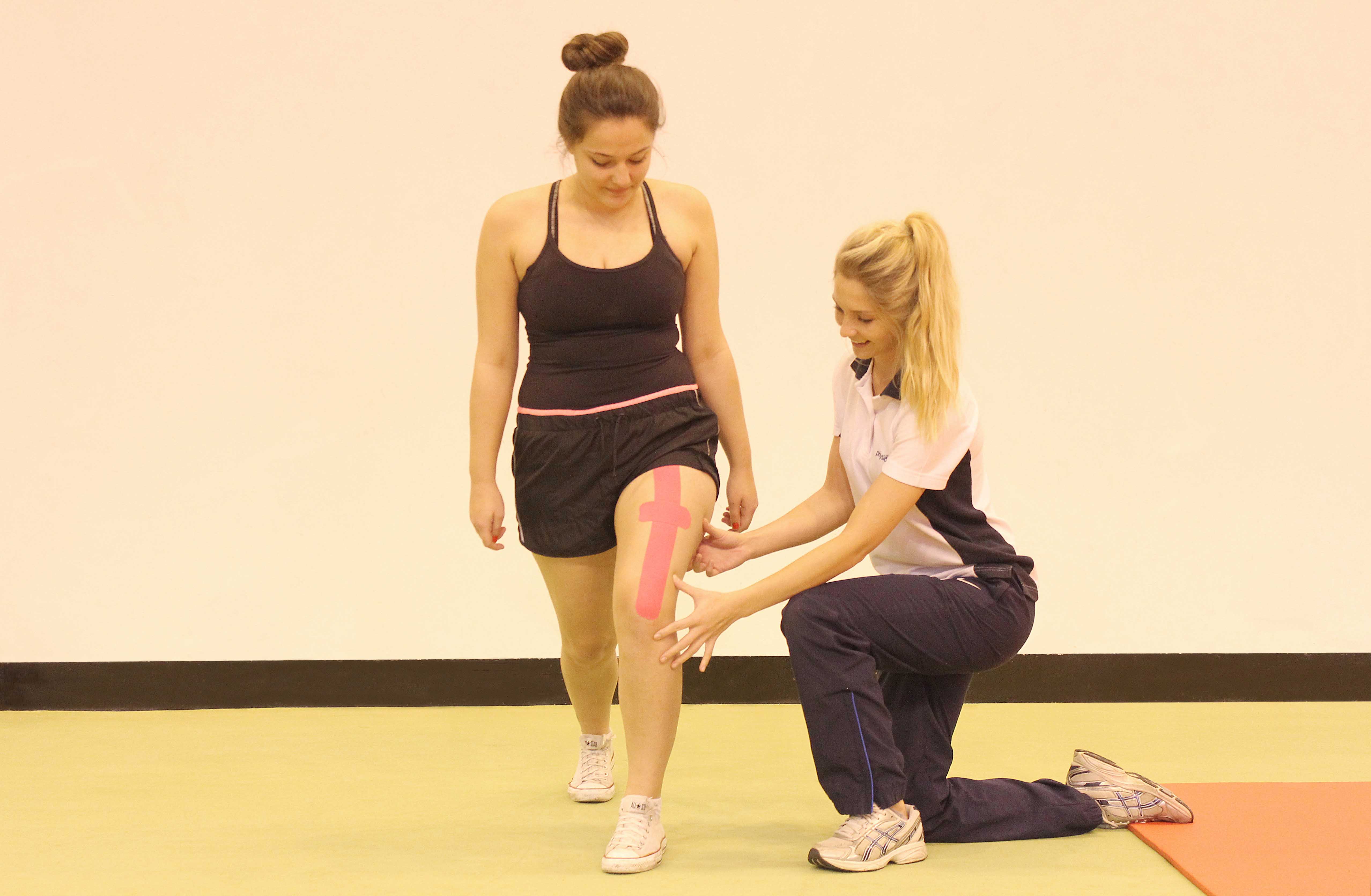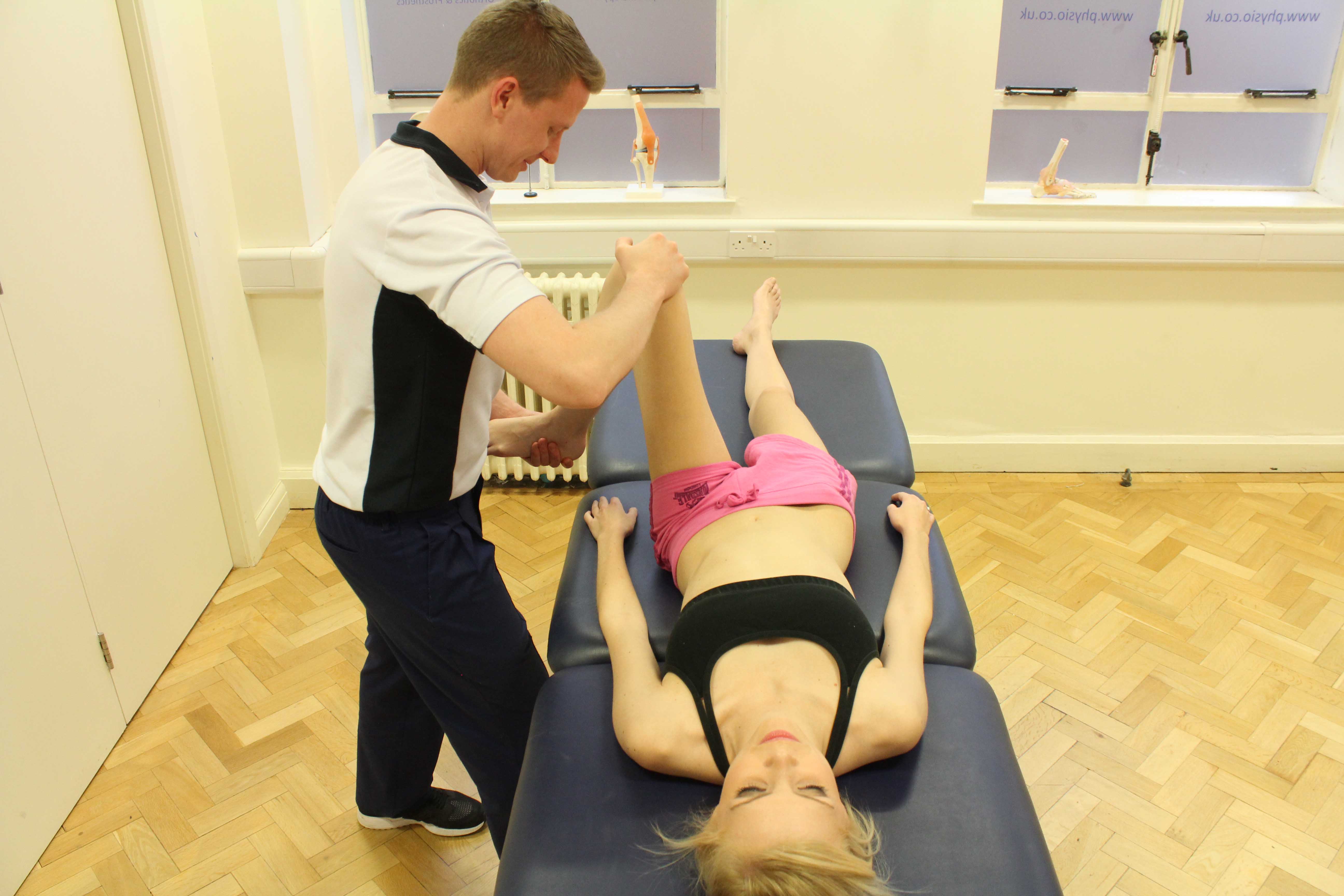- Anterior Cruciate Ligament (ACL) – This is the weaker of the two cruciate ligaments. It comes from the anterior intercondylar area or the tibia just posterior to the medial meniscus. It extends superiorly, posteriorly and laterally to medial side of the lateral meniscus. This ligament prevents posterior displacement.
- Posterior Cruciate Ligament (PCL)– This is the stronger of the two cruciate ligaments. It comes from the posterior intercondylar area of the tibia and passes superiorly and anteriorly to the medial side of the ACL and attaches on the anterior surface of the medial condyle of the femur. The PCL prevents anterior displacement.
- Lateral Collateral Ligament (LCL) – This extends from the lateral epicondyle of the femur to the head of the fibular. This prevents any medial / lateral translation.
- Medial Collateral Ligament (MCL) – This extends from the medical epicondyle of the femur to the medial surface of the tibia. This prevents any medial / lateral translation.
- Transverse Ligament – This ligament runs anteriorly across the meniscus. It attaches from the anterior complex margin of the lateral meniscus to the anterior end of the medial meniscus. This ligament prevents the translation of the anterior horns passing forwards and reducing pressure which is exerted on the menisci.
- Oblique Popliteal Ligament – This ligament extends from the medial condyle of the tibia to the lateral femoral condyle, blending with the tendon of the semimembranosus tendon. This forms the floor of the Popliteal Fossa.
- Arcuate Popliteal Ligament – This is a ‘Y’ shaped ligament which begins at the head of the fibular. One of the heads goes to the intercondylar area of the tibia. The second head goes to the lateral epicondyle of the femur and blends with the lateral head of the Gastrocnemius.
- Patella ligament – this is the distal part of the quadriceps tendon. It inserts into the tibial tuberosity and helps to keep the patella in place.
 Above: Progressive strengthening exercises, using supportive tape, supervised by therapist
Above: Progressive strengthening exercises, using supportive tape, supervised by therapistTypes of Ligament Injuries
Ligament injuries are known as sprains. This means that the ligament fibres will tear to some degree. It will depend upon the severity of the tear what type of treatment which is put into place, whether it will be conservative or surgical. The grades of ligament damage are:
- Grade 1 – this is when the ligament is overstretched causing pain and inflammation. This will be managed conservatively.
- Grade 2 – this is where a few of the fibres will rip. Depending on the amount of fibres that have been torn will be the deciding factor of whether to have surgery or conservative treatments.
- Grade 3 – this is a complete rupture of the ligament and will require surgery with rehabilitation post operatively.
Common ligament injuries
There are a few ligament injuries which are more common than others. These are:
- Anterior Cruciate Ligament tear
- Posterior Cruciate Ligament tear
- Medial Collateral Ligament tear
- Lateral Collateral Ligament tear
- Transverse Ligament tear
- Multiple ligament tear
 Above: Therapist performing knee assessment
Above: Therapist performing knee assessmentWhat Treatments can Physiotherapy offer for Knee Ligament Injuries?
The physiotherapists at Physio.co.uk can offer a variety of treatments for knee ligament injuries. Some of these treatments can include:
- Post operative rehabilitation
- Gait re-education
- Walking aid provision
- Strapping / taping
- Ice therapy
- Electrotherapy
- Strengthening exercises
- Stretching exercises
- Proprioceptive exercises
Summary
Knee ligament injuries can have a major effect on a person’s activities of daily living and prevent them from participating in activities they did previously. With a course of physiotherapy whether the injury has been managed conservatively or surgically will aid speed the recovery process and optimise healing. Please contact us or call 0330 088 7800 to arrange an appointment today.

 0330 088 7800
0330 088 7800

































